#rachmaninoff
Text
Really a big fan of that moment near the end of a piano sonata/concerto where the pianist has to go mad bananas for a few seconds
16 notes
·
View notes
Text
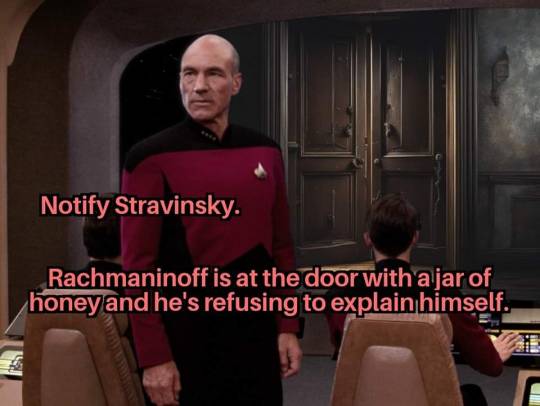

As someone who is 6'5" and not the best with people skills, I can easily imagine doing this.
408 notes
·
View notes
Text


50 composers
#bach#mozart#beethoven#haydn#handel#paganini#schubert#mendelssohn#chopin#schumann#liszt#brahms#strauss#tchaikovsky#dvorak#elgar#mahler#debussy#rachmaninoff#stravinsky#ravel#gershwin#shostakovich#bernsterin
154 notes
·
View notes
Text
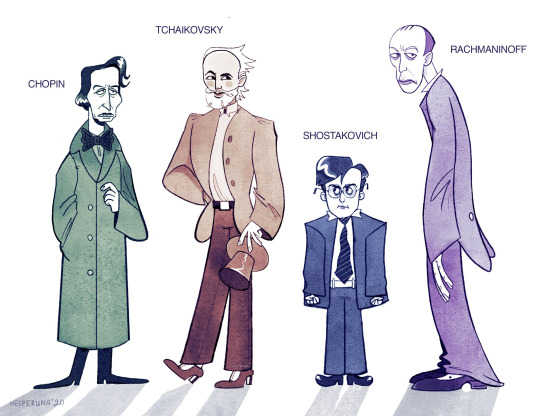
classical composers in style of Clone High i did from 2020
#they don't look modern yes. it's on purpose#clone high#clone high oc#my art#chopin#tchaikovsky#shostakovich#rachmaninoff
406 notes
·
View notes
Text
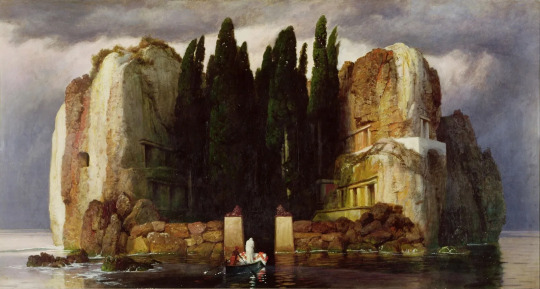
I just got out of seeing The Boy and the Heron. At the start of act 2, as soon as I saw the island, I refused to accept it wasn't a direct reference to the famous painting The isle of the Dead. It's too similar in setting, in mood, and in themes. The artist actually did multiple versions of this painting, the first of which was displayed in 1880. Without going heavily into spoilers, given the setting and time period of the characters, is it possible that the great uncle from the movie knew the painting? Just something fun to think about.
Also, Sergei Rachmaninoff did a "symphonic poem" about it, which I think also fits the setting of that island, and the mood the movie was going for.
youtube
119 notes
·
View notes
Text
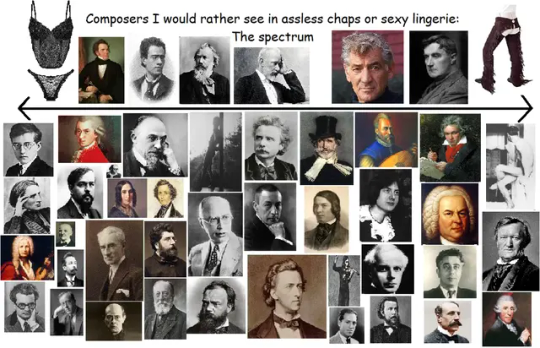
I made this a while ago on paint at midnight in a fever like state and needed to post it here
#classical music#classical composer#composer memes#classical memes#benjamin britten#shostakovich#johann sebastian bach#schubert#clara schumann#robert schumann#gustav mahler#johannes brahms#stravinsky#prokofiev#vivaldi#saint saëns#tchaikovsky#rachmaninoff#beethoven#lili boulanger#chopin#bartok#richard wagner#franz liszt#mozart#claude debussy#mendelssohn#joseph haydn#maurice ravel#leonard bernstein
163 notes
·
View notes
Text
#music#musician#classical#composer#polls#schubert#bach#mozart#shostakovich#beethoven#debussy#tchaikovsky#rachmaninoff#chopin#i personally pick debussy#but rach is a close second
381 notes
·
View notes
Text
go back through all of human history and I guarantee you any artist would relate to you on some of the struggles of making art.
Mary Shelley probably got writers block. I bet you Maurice Ravel skipped dinner because he was so focused a composition and couldn’t be bothered to cook something. Claude Monet went two years without painting a single thing and Rachmaninoff burned his first symphony after the failure of its premiere. Do you get what I mean?
Kafka worked at an insurance company because he couldn’t make money writing. Everyone complained about Da Vinci taking too long on their paintings because he was trying to make them perfect. Takashi Murakami almost for sure had days where he couldn’t draw a damn thing right. Some days you just aren’t in the mood and no matter what you make it’s all trash to you. sometimes it doesn’t come out how you wanted it to. it’s probably better than you think.
literally making art has always been the same. you’re human. we’re human. sometimes it’s hard. isn’t there some sort of comfort in that?
#rambling kinda#art#music#writing#composer#painting#artists on tumblr#ravel#maya angelou#franz kafka#takashi murakami#mary shelley#rachmaninoff#claude monet
118 notes
·
View notes
Text
I was today years old when I found out that the song "all by myself" by Eric Carmen (later recorded by Celine Dion) is based on the 2nd movement (Adagio sostenuto) of Rachmaninoff's piano concerto No. 2 in C minor, opus 18
112 notes
·
View notes
Text
YouTube links: Tchaikovsky 6, Rachmaninoff 2
Comments:
Rachmaninoff 2
Makes me feel like I'm in the movie Nemo (<- very good thing)

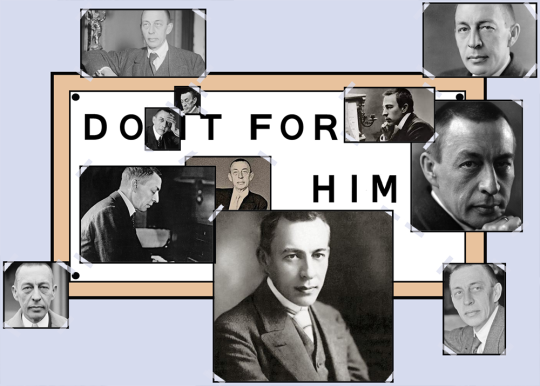
[Image via @iidsch]
Tchaikovsky 6
Everyone bangs on about the 4th movement but it's the 3rd movement that really hits
tchaik 6 is what i would listen to if i had an hour to live
the 5/4 movement of the tchaik lives rent free in my mind and i think about it every day
It’s beyond gorgeous. The melodies soar, the orchestra swells, and you just need to lie down for a while after listening to it. It’s Romanticism at its zenith. You want to weep and sigh, and it’s impossible to listen to it without literally feeling something.

Symphony No. 6, titled “Pathétique”, was Tchaikovsky’s final symphony. It is an intensely emotional piece, and to many scholars demonstrates the emotional turmoil that characterized much of Tchaikovsky’s life. He died about a week after its premiere, a fact which leads many scholars to debate about whether the content of the piece itself reflects the possibility that he may have committed suicide. The title itself is often translated to mean “impassioned suffering”, although this was most likely a later addition by Modest and not actually part of Tchaikovsky’s vision. Given these facts, many scholars interpret this piece to be about death and suffering. However, this piece can also be seen to represent life and all its contrasting moments. This interpretation is more holistic and inclusive of all of the moments captured in this piece, and also serves to break down the common narrative of Tchaikovsky as a tragic figure.
More comments about Tchaikovsky 6 below the cut (length warning):
Scholarship surrounding Tchaikovsky’s music tends to focus heavily on the ways his confliction over his homoerotic desires appears in his writing. However, his personal letters reveal a much more balanced understanding of himself that goes beyond the common narrative. In one letter written to Modest describing a new relationship with another man, he writes: “I awoke today with a feeling of unknown happiness and with a complete absence of that emotional sobriety that used to make me repent in the morning for having gone too far the day before.” Many of the letters he wrote regarding his relationships demonstrate no shame and no anguish beyond what can be expected of a man living in a homophobic society. It is important to take this information into account when listening to a piece such as this one that has been discussed so frequently, and to understand it beyond the turmoil and strife that it is seen to represent. Like many of Tchaikovsky’s works, this symphony displays a range of human emotions. It is not only representative of tragedy and “impassioned suffering”; it is a depiction of what it is like to live. It is also interesting to note that this piece is used as a signifier of queer desire in the novel "Maurice" by E.M. Forster, a novel also notable for its radical portrayal of a queer man who gets a happy ending. Much to think about there.
The first movement begins with a lone bassoon soloist playing a plaintive minor melody, which later comes back in the strings. As the movement progresses, it grows in intensity and texture. More instruments are added, and the music becomes more frantic, building and building towards the dramatic trumpet fanfare. Throughout this piece, Tchaikovsky continues to make significant use of contrasting dynamics and melodies, reflecting the emotions he hopes to convey through the music. Dramatic, tumultuous sections are interspersed with pastoral woodwind melodies, and the angry brass fanfares give way to a quiet ending.
The second movement is reminiscent of a waltz, and uses the strings and woodwinds more than the brass to achieve its floating melodies. The dynamics ebb and flow to build tension, but this movement never reaches the same levels of anguish that the previous movement does. Tchaikovsky makes use of pizzicato in the strings to convey a lighter, more cheerful mood, and features the upper woodwinds prominently. He also repeats themes frequently, giving the audience something familiar to listen out for as the movement progresses.
The third movement begins with frantic energy in the strings and woodwinds. As more instruments join the rush of music, the underlying eight note accompaniment does not let up, continuing the vivacious beginning through the whole movement. Instruments pass the melodies between each other and engage in conversations across the orchestra. Like the first movement, the brass play a prominent role in creating dramatic climaxes in the music, as well as supporting the march-like conclusion. Conductor Myung-Whun Chung describes the deceptively dramatic ending as, “one of the greatest, most thrilling, but most empty of victories in musical history,” observing that this movement has the energetic finality of a final movement. The reversal of having the true finale be a slower movement represents a shift away from the “Beethovian model of light over darkness” common in most other symphonies of this time period.
As mentioned before, ending on a movement with a slow tempo was a significant shift away from the standard of the time. This innovation inspired many other future composers to use the same technique, most notably Mahler in his Ninth Symphony. The quiet beginning builds up towards a chaotic rush of fast runs throughout the orchestra, only to stop abruptly and continue in halting, cautious bursts of melody. The movement continues with this cycle of rushing up to a climax and backing away as the movement progresses. Tchaikovsky highlights the horns in this movement, giving them both angry, blaring notes which cut through the string melodies and the flowing, lyrical lines that are passed throughout the orchestra. As the piece ends, the instruments fall away until all that is left are steady repeated notes in the basses, bringing this lament of a movement to an understated close.
61 notes
·
View notes
Text
Rachmaninoff’s Piano Concerto No. 2 is one of my favorite to perform. It has it all… lyricism, virtuosity, intensity, and depth.
Can you guess the famous pop song that was inspired by this work?
I’ll be performing this concerto next week in Chicago, then Rach 3 in October with Symphonicity. Check my website for tickets!
96 notes
·
View notes
Text





Things To Never Say To Someone Who Just Came Out - Composers Edition!
#tchaikovsky#hildegard von bingen#bernstein#brahms#britten#haydn#prokofiev#ravel#rachmaninoff#robert schumann#clara schumann#messiaen#chopin#mozart#stravinsky#debussy#lully#berlioz#wagner#charles ives#classical music#classical music memes#music memes#composer memes#lgbt#gay#lgbt history#gay history#the onion
411 notes
·
View notes
Text
youtube
Valentina Lisitsa plays Rachmaninoff - Piano Sonata No.1 in D Minor, Op.28 1st mov
33 notes
·
View notes
Text
For anyone who’s as excited about this song as I am, here’s a playlist I made of all my musical inspirations for it!
#Good omens#crowley#crowley’s lament#David tennant#ineffable husbands#queen#musical theatre#tango#rachmaninoff
25 notes
·
View notes
Text
Sorry for the disturbance my dearest masters, I just want to figure out how many great composers and musicians, and their family and friends have come to the afterlife.
If there are someone I accidentally missed, please let me know and I will add their names to this list. The list is arranged in no particular order, and I show my respect to everyone.
Here we go——
Wolfgang Amadeus Mozart @wolfgangus-mozartus , and his mini form @bratty-prodigys and the father Johann Georg Leopold Mozart @fatherofgeniuses
Antonio Salieri @antoniosalieri-official
Ludwig van Beethoven @beethoes and @beethoven-sir
Franz Liszt @franzliszt-official , and his lover Carolyne Sayn Wittgenstein @carolyne-sayn-wittgenstein and his student Marie Louise Baskerville @marie-louise-baskerville (thanks for Monsieur Chopin’s help!)
Fryderyk Chopin @chopinski-official , and his sister Emilia Chopin @emilia-chopin ; his student (also) Marie Louise Baskerville @marie-louise-baskerville and Madame George Sand @georgesand-official your name will appear on the list of writers too if there are more writers come here…I promise…
Jakob Ludwig Felix Mendelssohn Bartholdy @mendyson , and his sister Fanny Cäcilie Mendelssohn @fanny-mendelssohn-official and his wife Cécile Mendelssohn @cecile-mendelssohn (thanks for miss Baskerville’s help!)
Hector Louis Berlioz @berliozussy-official
Robert Schumann @robertschumann-official and Clara Schumann @claraschumann-official
Richard Wagner @richardwagnermage and @richardwagner-official (maybe?)thanks for Litz’s help!
Johannes Brahms @johannesbrahms-official
Pyotr Ilyich Tchaikovsky @tchaikovsky-pyotr
Sergei Vasilyevich Rachmaninoff @s-v-rachmaninoff
Aram Ilitch Khatchaturian @aram-khachaturian
Sergei Prokofiev @sprkfv
Dmitri Dmitrievich Shostakovich @shosty-official
Éric Alfred Leslie Satie @eric-al-satie
TBC…
#classical composer#classical composer rp#mozart#beethoven#liszt#chopin#mendelssohn#berlioz#tchaikovsky#rachmaninoff#prokofiev#shostakovich#satie#antonio salieri#richard wagner#brahms#robert schumann#clara schumann
44 notes
·
View notes
Text
Regulus Black would have Rachmaninov piano concerto no. 2 on vinyl
#I wish I was him#regulus black#jegulus#james potter#marauders#classical music#rachmaninoff#rachmaninov
21 notes
·
View notes